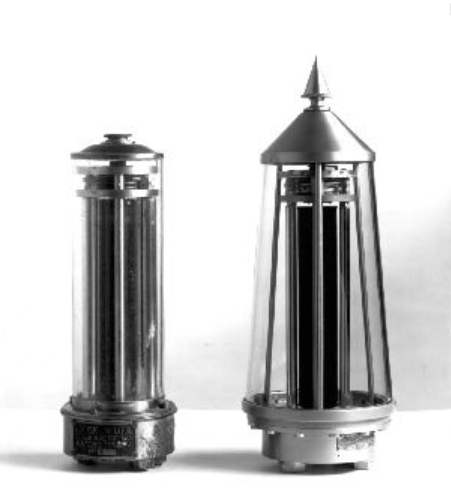In this blog post, we’ll discuss why Nils Gustav Dahlen is called the worst Nobel Prize winner in physics and whether it’s true.
The question “Who is the best Nobel Prize winner in physics?” always provides us with a fun discussion. If someone were to ask you this question, who would you choose? Niels Bohr for opening the door to quantum mechanics? Heisenberg for the uncertainty principle? Einstein for being one of the greatest physicists of all time? If you’ve thought of an answer, let’s think about this one. What’s the worst, most disappointing Nobel Prize in physics of all time? Nils Gustav Dahlen’s 1912 Nobel Prize in Physics for his invention of an automatic regulator for gas storage in lighthouses is an ignominious first-place finisher in many surveys of the worst Nobel Prize in physics of all time. His invention of an automatic regulator for gas storage in lighthouses has become an obsolete and disappointing achievement in modern times. However, when evaluating a person’s achievements, we shouldn’t simply judge them by modern standards; we should consider what problems society was facing at the time of his research (or invention), what the consequences of his work were, and how it was viewed at the time.
In this case, shipping (long-distance trade) exploded in the early 20th century, fueled by colonization by the great powers. In the pre-GPS era, lighthouses were the only thing mariners could rely on during nighttime voyages. Thousands of people died each year while trying to dock in harbors at night. At the turn of the 20th century, the number of lighthouses in Sweden increased almost tenfold in a decade, so you can imagine how important they were. In this situation, having lighthouses that performed well was of vital importance to all countries and traders. A new recipe for acetylene developed in 1895 was enough to excite them. Acetylene gives off a very bright, white light when burned, making it ideal for use in lighthouses, and the new recipe made it possible to produce acetylene in large quantities. However, the practical application of acetylene had some fatal flaws, the biggest being that it was unwieldily volatile and explosive at atmospheric pressure. To overcome these dangers, Niels Gustav developed Agamassan, a porous material, and published a storage method that involved storing a solution of acetone dissolved in acetylene in Agamassan. This material and storage method dramatically improved the safety of acetylene and is still used today to store and transport acetylene.
While the safety of acetylene was solved, Nils Gustav’s Dahlen’s lantern (Aga) posed another problem: lighthouses needed to be able to produce a sometimes intermittent light to distinguish one lighthouse from another, or from other lights. The traditional method of producing a flashing light was to cover the lantern with a screen or turn the light around, but this was too inefficient for acetylene lanterns, which were more expensive than traditional lanterns. Dahlen solved the problem with acetylene lanterns by devising a new way to open and close the gas pipe. He then went on to develop his crowning achievement, the solar valve, in 1907. The solar valve consisted of several black rods inside a glass tube, as shown in the figure below. Sunlight heats up the rods and causes them to expand, closing the valve, and when the sunlight disappears, the rods contract, opening the valve again. It was a gas valve with a solar sensor. His solar valve reduced the fuel consumption of lighthouses by 94%, and his invention made it possible to install lighthouses and buoys in locations that were otherwise inaccessible for maintenance.

His successive achievements brought the new ‘dahlen lanterns’ to maritime nations around the world, and their value was unimaginable. Whereas it had previously cost 200,000 kronor to build a lighthouse on the coast and 25,000 kronor a year to maintain it, it now cost only 9,000 kronor to build and 60 kronor a year to maintain. Considering that the Swedish central government’s total expenditure in 1910 was only 250 million kronor, it’s easy to imagine how much money the Dahlen Lighthouse saved.
However, Dahlen’s groundbreaking lanterns would soon come to an end with the advent of electricity. As electricity became more widely available to the public, lighthouses would no longer burn gas, and the Dahlen lantern would gradually disappear, outpriced and outperformed by electricity-powered lanterns.
His invention is often compared to other Nobel prizes in physics. It’s true that it’s not an accomplishment that everyone would be proud of even today, like van der Waals’ 1910 Nobel Prize for the equations of state for gases and liquids or Wien’s 1911 Nobel Prize for the law of thermal radiation. However, in the circumstances of his time, his work in improving lighthouses, which saved many people’s property and lives, was enough to earn him accolades. The lack of recognition for Dahlen’s work may be due to the fact that he was the last inventor to win the Nobel Prize in Physics due to changes in the criteria for the award.
 I’m a blog writer. I want to write articles that touch people’s hearts. I love Coca-Cola, coffee, reading and traveling. I hope you find happiness through my writing.
I’m a blog writer. I want to write articles that touch people’s hearts. I love Coca-Cola, coffee, reading and traveling. I hope you find happiness through my writing.